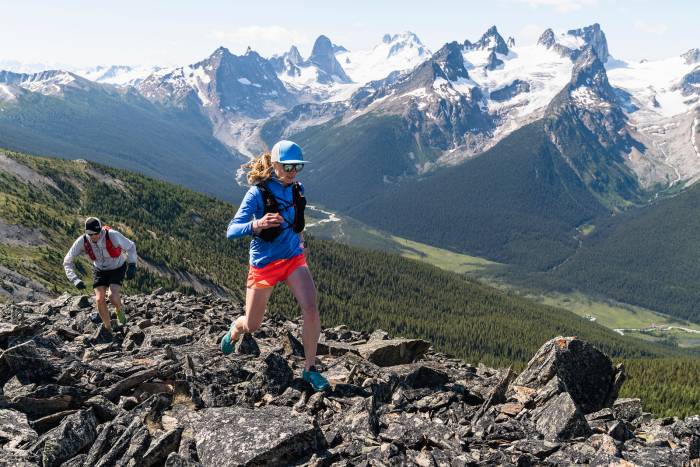Stretches? What stretches? This time of year, the countdown is on: How long till you can kill the screen, jump in the car, and hit the nearest trail for a post-work workout?

There’s a potential problem with transitioning too quickly from work to workout: injury. When we sit at desks for hours on end, hunch over computer screens, or even stand too long at work, we will eventually suffer unwanted pain when we start to move, especially too fast too soon.
One solution is trying a few simple stretches to warm up and ease the stiff transition time between static work and active training sessions.
To learn what body parts and stretches to focus on, we caught up with Dane N. DeLozier, doctor of physical therapy and sports science lab director at Revo Physiotherapy and Sports Performance in Boulder, Colorado.
Shoulders: Hurt From Slouching at Your Computer
The thoracic spine is the middle segment of the back – the area between your shoulder blades. Proper extension mobility here is critical for proper mechanics of the shoulder. Think how your upper body functions when you swing your arms on a run, rotate alternately during a swim, or perch on your bike, for example.
“As we spend more and more time sitting at the computer, staring at cell phones, and having generally lame posture, our thoracic spines become stiffer and stiffer,” DeLozier said. “This stiffness can alter mechanics at the shoulder, overstress your neck, and even limit optimal breathing during exercise. If sitting up straight is a struggle for you, there is most likely some thoracic-spine mobility work to be done.”
Try this to open up the thoracic spine before your next workout:
Hips: The More You Sit, the Tighter They Get
Hip flexor muscles, which have attachments on the top of your femur, the inside of your pelvis, and your spine, play a huge role in all athletic activity. And they get tighter while you’re working on your computer all day.
“Desk warriors, cyclists, and folks who commute find themselves in hip flexion a lot,” DeLozier said. “Primarily responsible for bringing your knee toward your chest, this muscle group is more often than not in a shortened position.”
According to DeLozier, a vast majority of his clients have approximately 0-5 degrees of true hip extension. That’s way off what’s normal. “All humans should be shooting for around 10-15 degrees of true hip extension,” he said.
“Without this mobility, you can expect to experience some low back pain, knee pain, IT band pain. Lack of hip extension mobility seriously limits your ability to utilize glute max optimally. That’s a big-ass problem.”
Try this to mobilize your hip flexors in preparation for your sport:
Ankles: Stiffness Down Low Heads Up the Kinetic Chain
If you find yourself seated more often than not, you will most likely experience tight calf musculature. But if you stand more at work, your ankles may feel tight. Dorsiflexion (when toes are brought closer to the shin) is critical to all athletic movements – running, cycling, hiking, walking, etc. You will feel the effects of limited dorsiflexion range eventually.
DeLozier regularly sees anterior ankle impingement, Achilles pain, plantar fascia pain, and even toe pain.
“Those of you who are experiencing pain from a bunion should pay attention,” he said. “Lack of dorsiflexion often causes a medial collapse at the midfoot to fake the range, and this can result in off-axis loading at the big toe. Ouch.”








